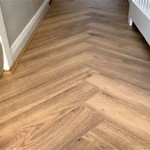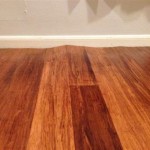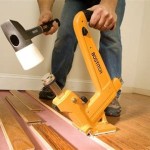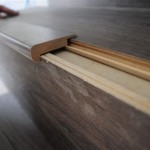Understanding Moisture Content in Wood Flooring: An NWFA Perspective
The National Wood Flooring Association (NWFA) plays a crucial role in setting standards and providing education within the wood flooring industry. A fundamental aspect of ensuring successful wood flooring installations and longevity is understanding and managing moisture content (MC). Excessive or insufficient moisture content within wood flooring, subflooring, and the surrounding environment can lead to a myriad of problems, including cupping, crowning, buckling, gapping, and adhesive failures. Consequently, the NWFA emphasizes strict adherence to moisture content guidelines and provides comprehensive resources to help professionals and homeowners alike navigate this complex area.
Wood is a hygroscopic material, meaning it readily absorbs and releases moisture from the surrounding air until it reaches equilibrium. This characteristic makes moisture content a dynamic variable influenced by relative humidity and temperature. Proper acclimatization of wood flooring to the jobsite conditions is paramount, and understanding the NWFA's guidelines regarding acceptable moisture content levels is essential for preventing costly and disruptive issues down the line. Failing to do so can not only compromise the aesthetic appearance of the floor but also its structural integrity.
Key Point 1: The Importance of Acclimatization
Acclimatization is the process of allowing wood flooring to adjust to the environmental conditions of the installation site before it is installed. This process is critical because wood will continue to gain or lose moisture until it reaches equilibrium with its surroundings. The NWFA strongly advocates for acclimatization and outlines specific procedures to follow, taking into account geographic location, species of wood, and seasonal variations in temperature and humidity. This typically involves storing the wood flooring in the room where it will be installed for a specified amount of time, usually several days, or even weeks, depending on the difference between the wood’s existing moisture content and the expected equilibrium moisture content (EMC) of the installation environment.
The duration of the acclimatization period is not arbitrary. It is determined by several factors. The NWFA recommends using a moisture meter to accurately measure the moisture content of both the wood flooring and the subfloor. These readings provide valuable insights into the extent to which the wood needs to acclimatize. Furthermore, the type of wood flooring plays a role. Solid wood flooring, being more susceptible to dimensional changes due to moisture fluctuations than engineered wood flooring, often requires a longer acclimatization period. The temperature and relative humidity of the installation site must also be closely monitored, as these factors directly influence the rate at which the wood gains or loses moisture.
Proper air circulation around the wood flooring during acclimatization is essential. Stacking the wood flooring tightly against walls or in corners can impede airflow and hinder the acclimatization process. The NWFA recommends spacing the bundles of wood flooring apart to allow air to circulate freely around all surfaces, ensuring even moisture distribution. This practice helps prevent localized areas of excessive moisture or dryness, which can lead to differential expansion and contraction after installation.
In cases where HVAC systems are not yet operational at the jobsite, the NWFA advises utilizing temporary heating or dehumidification equipment to simulate the expected living conditions. This step helps accelerate the acclimatization process and ensures that the wood flooring reaches a moisture content closer to its eventual equilibrium. The use of appropriate equipment and careful monitoring of temperature and humidity are essential for achieving optimal results.
Key Point 2: Moisture Meter Usage and Guidelines
Accurate measurement of moisture content is fundamental for successful wood flooring installations. The NWFA endorses the use of calibrated moisture meters and provides guidelines on selecting and using these instruments effectively. There are two primary types of moisture meters: pin meters and pinless meters. Pin meters measure moisture content by driving two small pins into the wood and measuring the electrical resistance between them. Pinless meters, on the other hand, use electromagnetic waves to detect moisture levels without penetrating the wood surface. Each type has its advantages and disadvantages, and the choice depends on the specific application and the user's preferences.
Pin meters are generally considered more accurate for measuring the moisture content of denser woods and can provide readings at specific depths within the wood. However, they leave small pinholes that may be undesirable in some applications. Pinless meters are less invasive and can cover a larger area more quickly, making them suitable for scanning large quantities of wood flooring. However, they may be less accurate on denser woods and can be affected by surface moisture or coatings. Calibration of moisture meters is crucial for ensuring accurate readings. The NWFA recommends regular calibration of moisture meters using a calibration block or by comparing readings with a known standard. A properly calibrated moisture meter is essential for making informed decisions about acclimatization and installation.
The NWFA provides specific guidelines for acceptable moisture content differences between the wood flooring and the subfloor at the time of installation. These guidelines vary depending on the type of wood flooring and the subfloor material. For solid wood flooring installed over wood subfloors, the NWFA typically recommends a moisture content difference of no more than 4%. For engineered wood flooring, this difference is often smaller, typically 2% or less. Exceeding these recommended moisture content differences can lead to significant problems, such as cupping, crowning, and buckling, as the wood flooring adjusts to the moisture content of the subfloor.
When measuring moisture content, it's important to take readings from multiple boards and at different locations within each board. This approach helps account for variations in moisture content across the wood flooring and provides a more representative average. The NWFA recommends taking readings from at least 20 boards per 1,000 square feet of flooring, and recording these readings for future reference. In addition to measuring the moisture content of the wood flooring, it’s equally important to measure the moisture content of the subfloor. This step helps determine the overall moisture environment and ensures that the wood flooring is compatible with the subfloor.
Key Point 3: Addressing High Moisture Content in Subfloors
High moisture content in subfloors is a common problem that can jeopardize wood flooring installations. The NWFA emphasizes the importance of addressing subfloor moisture issues before installing any wood flooring. Subfloor moisture can originate from various sources, including ground moisture, leaks, condensation, or improper construction practices. The NWFA provides guidance on identifying and mitigating these moisture sources to ensure a stable and dry subfloor for wood flooring installation.
One of the first steps in addressing high moisture content in subfloors is to conduct a thorough inspection to identify the source of the moisture. This may involve checking for leaks in plumbing, inspecting the foundation for cracks, and evaluating the effectiveness of the vapor barrier. The NWFA recommends using moisture meters to assess the moisture content of the subfloor at different locations and depths. High moisture content readings indicate the presence of a moisture problem that needs to be addressed before proceeding with the installation.
If high moisture content is detected in a concrete subfloor, the NWFA recommends performing a calcium chloride test or using a relative humidity probe to determine the moisture vapor emission rate (MVER) or the relative humidity within the concrete slab. These tests provide quantitative data on the amount of moisture being emitted from the concrete and help determine whether the subfloor is suitable for wood flooring installation. The NWFA has specific guidelines for acceptable MVER and relative humidity levels, depending on the type of wood flooring and the adhesive being used.
Remediation methods for high moisture content in subfloors vary depending on the source and severity of the problem. If the moisture is originating from ground moisture, improving drainage around the foundation or installing a more effective vapor barrier may be necessary. If there are leaks in plumbing, these need to be repaired promptly. In some cases, it may be necessary to use a moisture mitigation system, such as a topical moisture barrier or a chemical treatment, to reduce the moisture content of the subfloor. The NWFA provides detailed information on selecting and applying appropriate moisture mitigation systems.
In extreme cases, the NWFA may recommend removing and replacing the affected portion of the subfloor. This may be necessary if the subfloor is severely damaged or if the moisture problem cannot be adequately addressed through other means. When replacing a subfloor, it's important to use moisture-resistant materials and to ensure that the new subfloor is properly installed and sealed to prevent future moisture problems. The NWFA also emphasizes the importance of documenting all moisture testing and remediation efforts. This documentation can be valuable in the event of future moisture-related issues and can help demonstrate that the installer took appropriate steps to address the problem.

Let It Sit Or Use Acclimating Wood Wunderwoods

Wood Moisture Testing Credly

How To Measure Moisture In Hardwood Floors

Water And Wood Golden State Flooring

Technical Troubleshooting Relative Humidity And Wood Hardwood Floors

Nwfa National Wood Flooring Association

Concrete Moisture Testing Credly

How To Acclimate Solid Wood Flooring Rw Supply Design

Nwfa National Wood Flooring Association

Nwfa National Wood Flooring Association
Related Posts








